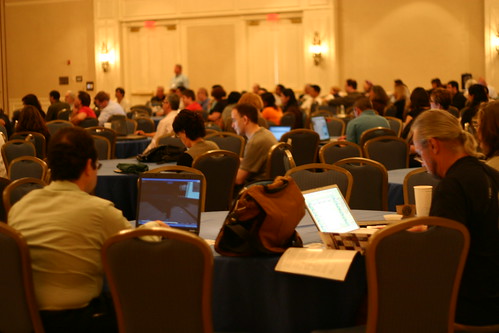
People are using the same cognitive tools in their social interactions within virtual environments as they would in the physical world. A recent study has confirmed this happens even though our avatars do not necessarily represent a clear picture of the people behind those avatars, with regards to gender, race, and all those other things that we have biases against.
The study’s co-investigators are Northwestern University’s Paul W. Eastwick, a doctoral student in psychology, and Wendi L. Gardner, Associate Professor of Psychology and member of Northwestern’s Center for Technology and Social Behavior. Eastwick’s past contributions revolve around romantic relationship development, and the use of speed dating and virtual environments to test psychological hypotheses. Gardner’s interests focus on the social aspects of the self, and the sorts of evaluation that are performed in the human brain that are unconscious.
Eastwick and Gardner performed the study in There.com, which is billed primarily as a fantasy environment – it is social, and the interactions are with real people, but there are no programmatical constraints on how people represent themselves within those interactions. The management at There.com showed significantly more interest in having the study performed in their virtual environment than did other services like Second Life.
Two classic social psychology experiments were performed within the realm of There.com: an avatar controlled by the study group attempted to influence an avatar controlled by a member of the native There.com populace to fulfill a request. The door-in-the-face (DITF) gambit, in which a ridiculously large request is followed by a much more reasonable request, and the foot-in-the-door (FITD) technique, in which a small, reasonable request or statement is made, followed up with a much larger request, were used. Then, observation occurred to see how people reacted to a) the request in general and b) to the appearance of two different avatars in acquiescing to the request.
As in the physical world, the most successful technique was the DITF as performed by a light-skinned individual, with an increase in compliance of 20% over a simple request; compare this to only an 8% increase in compliance for the dark-skinned individual for the same technique. Less successful was FITD, which returned a result of only slight more compliance for either skinned individual.
Research has shown this disparity in the physical world for decades. DITF relies on a person’s perception of the person making the request: is this person worth impressing, and do I feel that I can risk offending them? FITD relies more on self-perception: how do I feel about my own reputation, and do I care how I appear to the person making the request?
Interestingly, many people seem to share the opinion that virtual environments are exempt from social influence. This idea possibly stems from the anonymity of having an avatar with which you do not identify, and which has no connection with your real identity. Or perhaps from the idea that virtual environments are in essence games in which anything goes and no-one can be harmed. Or even from the perspective that virtual environments are easy to leave, and therefore there need be no social ties with them. Nonetheless, it would appear that most people using virtual environments are heavily socially invested in them, to the extent that they apply their everyday social biases to the appearance of the avatars of those they interact with, and that they are just as susceptible to social gambits designed to increase compliance.
Source:Â Real-world Behavior And Biases Show Up In Virtual World
Wendi L. Gardner’s professional page.
Paul Eastwick’s entry at the Department of Psychology, Northwestern University.
Social Influence Journal article.










Recent Comments